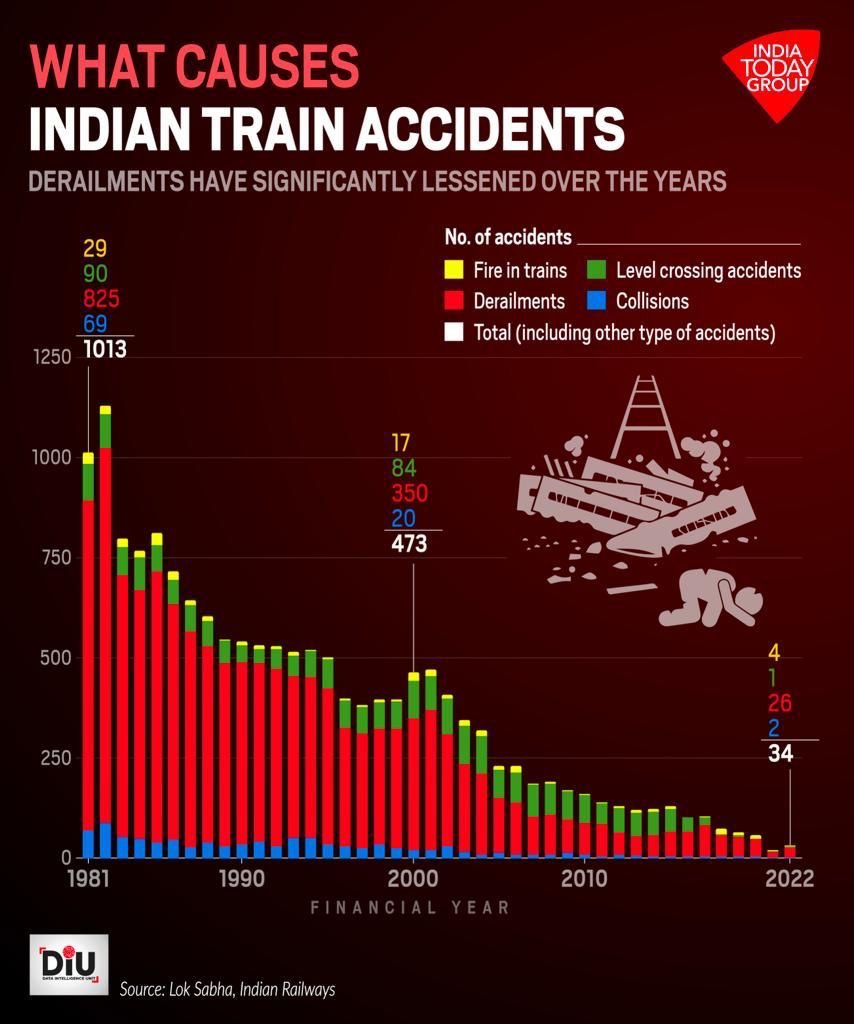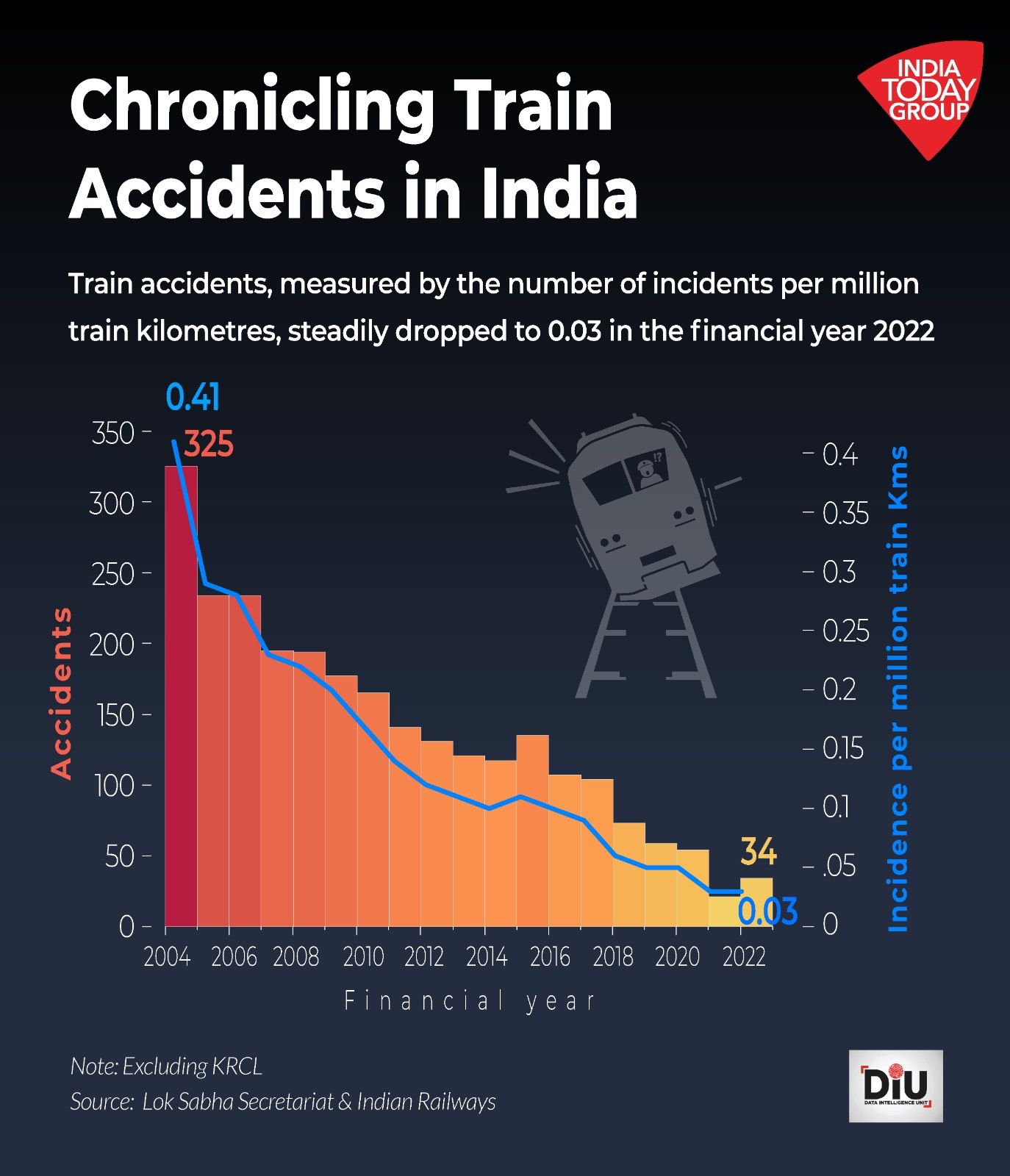What caused the Odisha train accident? Could Kavach system have prevented it?

Multiple train collision in Odisha killed 275 people. Photo: AFP
The Odisha train accident has triggered a number of questions about the safety and maintenance of the Indian Railways, whose rail network is the fourth longest in the world. The three-train collision took place on June 2, Friday, killing 275 people and injuring thousands of others in Balasore district, Odisha.
This 'three-way' train accident is the third biggest rail tragedy in India's history and the deadliest one in 24 years.
What happened?
How did the rail tragedy actually happen? Watch here : 👇 pic.twitter.com/RpCPeT5EXr
— Rajdeep Sardesai (@sardesairajdeep) June 4, 2023
While the complete details of how the accident took place are still not available, this is what is known so far:
- On June 2, around 7 pm, the Coromandel Express train carrying 1,500 passengers left Shalimar Railway Station in West Bengal for Chennai. At Balasore, it collided with a stationary goods train after entering a loop line it wasn't meant to be on.
- Some of the coaches of the Coromandel Express had gone over the goods train and other coaches fell onto another railway line.
- Then another passenger train, Howrah Superfast Express, heading from Bengaluru to Howrah, crashed into the wreckage, resulting in some of its own coaches being derailed.
- In total, the Odisha government said 17 coaches of the two passenger trains were derailed and severely damaged.
Why did it happen?
A detailed investigation will reveal the true cause of the accident, but a preliminary report suggests a 'signal failure'.
- Railway Minister Ashwini Vaishnaw on Sunday told ANI that they have identified the cause of the accident and the people responsible for it.

- "Change in electronic interlocking" has been cited as the reason for the accident. The system controls routes for every train operating in an area to ensure they run safely on the intended tracks.
- The Ministry also ruled out driver error and system malfunction. Some reports citing unnamed sources from the Railways also hinted at a possible "sabotage" of the electronic interlocking system.
- This theory of an intentional act of derailment is not new. In 2010, a passenger train derailment and collision with a goods train in West Bengal that killed 150 people, was traced to Maoist rebels.

- In the 2010 case, it was said that the rebels sabotaged the rail track causing the passenger train coaches to derail onto the path of an oncoming goods train.
- Ashwini Vaishnaw has called for a CBI investigation, though the probe by the Commissioner of Railway Safety will continue.
- On the other hand, Jaya Verma Sinha, Member, Operations & BD, Railway Board, speaking to the media explained that the interlocking system is failsafe.

Rail Board member Jaya Verma Sinha explains the #OdishaTrainTragedy.
— IndiaToday (@IndiaToday) June 5, 2023
(@Milan_reports )#ITVideo #News #Balasore #News pic.twitter.com/mNstCzXlFP
- Sinha also told the media that the driver of Coromandel Express was alive and that they have spoken to him, "We talked to the driver of Coromandel. He was in his senses when he told us that he had received a green signal."
- Just in February this year, the principal chief operating manager of the South Western Railway zone had flagged serious concerns with the electronic interlocking system which had almost caused an accident.
Could the accident have been avoided if the Kavach system was in place?
- The short answer is - no.
- Railway Board member Jaya Verma Sinha said that the accident couldn't have been avoided even if the Kavach system was in place as the distance between the goods train and Coromandel Express wasn't enough after the latter entered the loop line suddenly.
- Indian Railways Spokesperson Amitabh Sharma revealed that the "Kavach system" was not available on the route where the accident took place.

- Kavach, the anti-collision system, was indigenously developed during the UPA government. It was later renamed as Kavach system by the BJP government.
- However, so far, only 2% of rail routes in India have this system. The system is installed between Delhi and Kolkata and Delhi and Mumbai routes.
- Opposition leaders were quick to ask why the Centre did not implement the system on more rail routes in India, despite their "PR campaign" surrounding it.
- The opposition claimed that the Kavach system could have prevented the accident.
- The anti-collision system alerts the Loco pilot and/or automatically brings the train to a halt if it detects two trains coming close on the same track with the system in place.
Last year, you and the railway minister were thumping chests over the KAVACH system that was designed to prevent train collusion.
— Gowtham Pothagoni (@Gowtham_Goud6) June 3, 2023
What happened to the Kavach?
1000+ people were injured, and around 300 people died in the tragic Odisha train accident. https://t.co/1ZeeJAQo7l pic.twitter.com/vNYxlDRy9c
The warning that came 6 months ago
Regardless of whether the Kavach was in place or not, several more questions have been asked about the maintenance of various systems. And a 2022 CAG (Comptroller and Auditor General of India) report on train derailments is at the centre of discussion.
- On December 21, 2022, the CAG report on "Derailment in Indian Railways" was tabled in Parliament.
- It revealed that a staggering 7 out of 10 rail accidents between 2017-18 and 2020-21 were due to derailments.

- Around 23 causes were cited for the derailments including track defects, issues with engineering and maintenance, operating issues, over-speeding, lack of human resources, etc.
As per the CAG report,
— Dr. Shama Mohamed (@drshamamohd) June 4, 2023
Out of 217 accidents in the last 4 years, 75% were due to derailment.
Mandatory track inspections were done only in 181 cases of the required 350.
Why was Kavach, the collision avoidance system, not installed on this crucial route?
The govt wants to…
- The report also said that the Rashtriya Rail Sanraksha Kosh (RRSK), meant for the safety of railways, was being underfunded by the Railways' internal resources.
- Moreover, the report also found that the spending of the funds on "Priority-I" works that include major major civil engineering works and level crossing infrastructure had declined from 2017-18 to 2019-20.
- And it also reported that the funds allocated for track renewal weren't fully utilised.

On the other hand, a goods train derailed about 500 km near the recent accident site on Monday, June 5. However, the locomotive is run by a private cement company and is not connected to the Indian Railways.
Goods train carrying limestone derails in Odisha's Bargarh#Odisha #OdishaTrainAccident
— IndiaToday (@IndiaToday) June 5, 2023
Read full story here: https://t.co/4mRCleYrn0 pic.twitter.com/jnlGawgVQT
The government has been trying to advance the ageing railway system in India, starting work on high-speed trains.
However, the railway system that carries some 25 million passengers every day in India is drowning in issues ranging from poor maintenance of coaches, and railway stations, the recently flagged safety issues, punctuality, and more.
Train derailments have taken numerous lives in India. The last major train derailment was in 2016, in Uttar Pradesh's Pukrayan. 14 coaches of the Indore-Rajendra Nagar Express derailed, killing 152 people and injuring hundreds.

